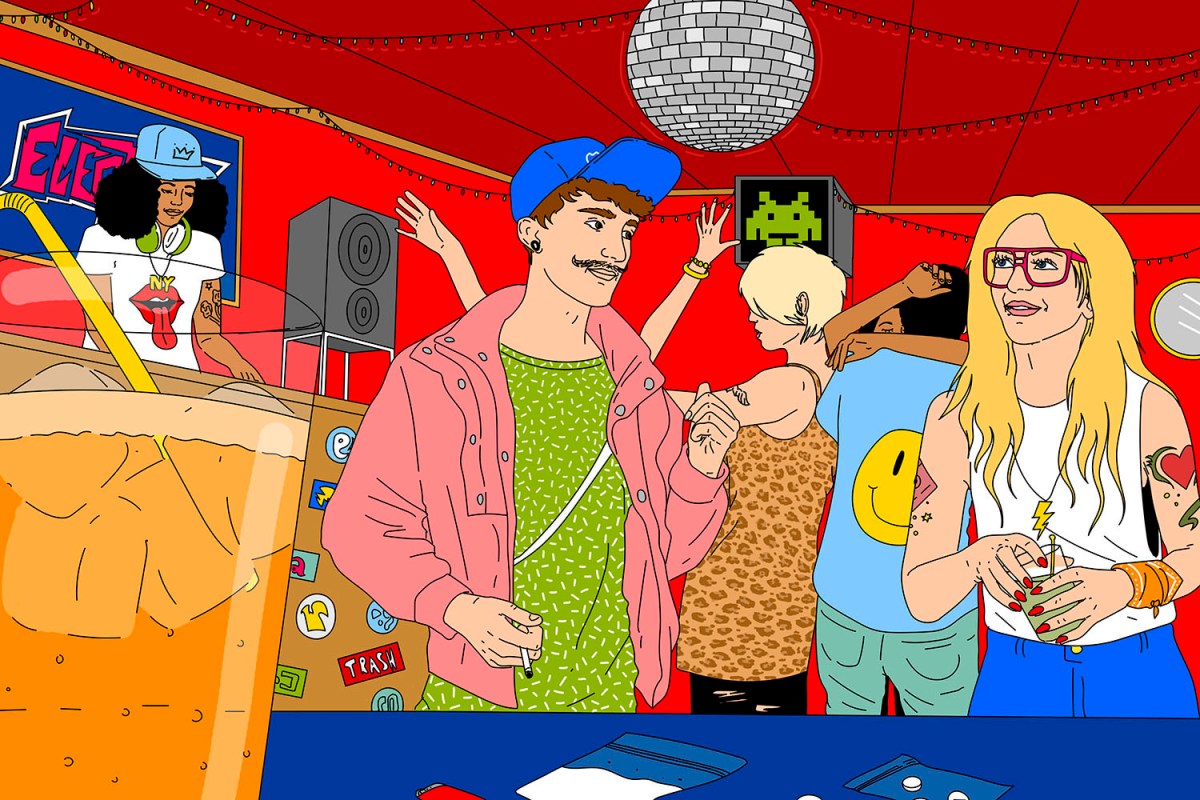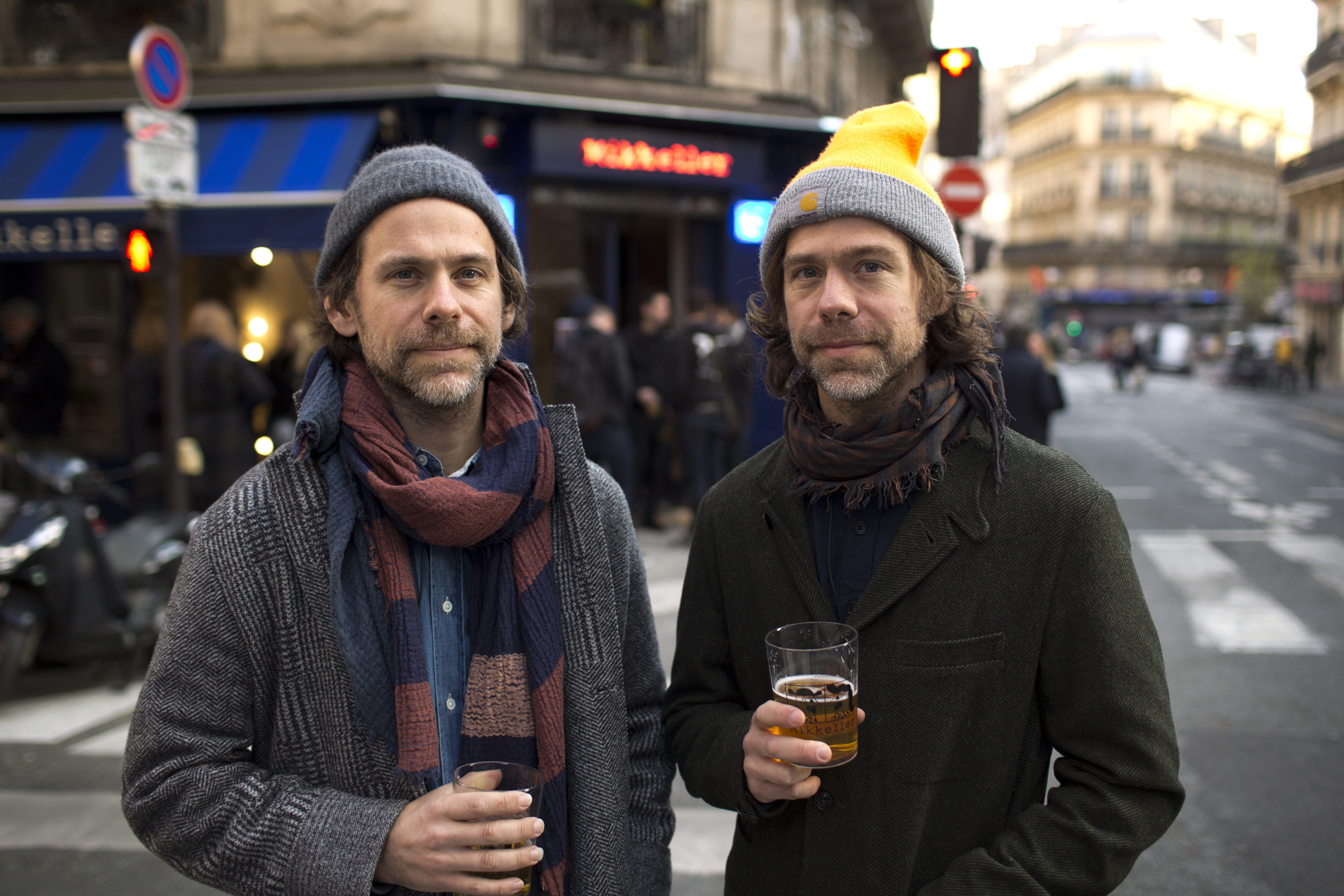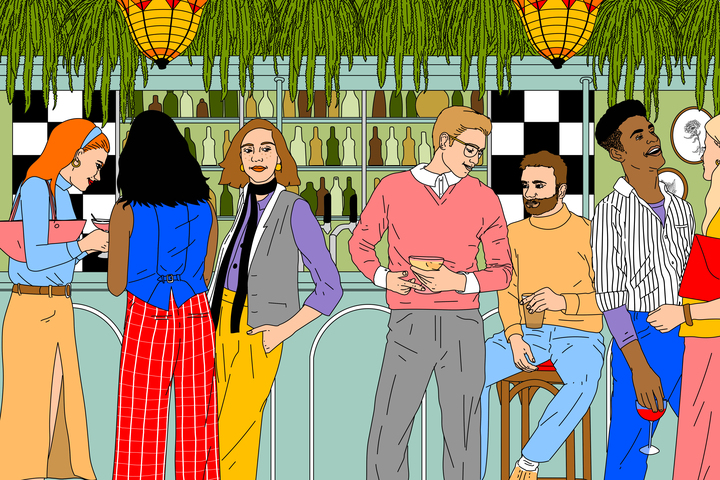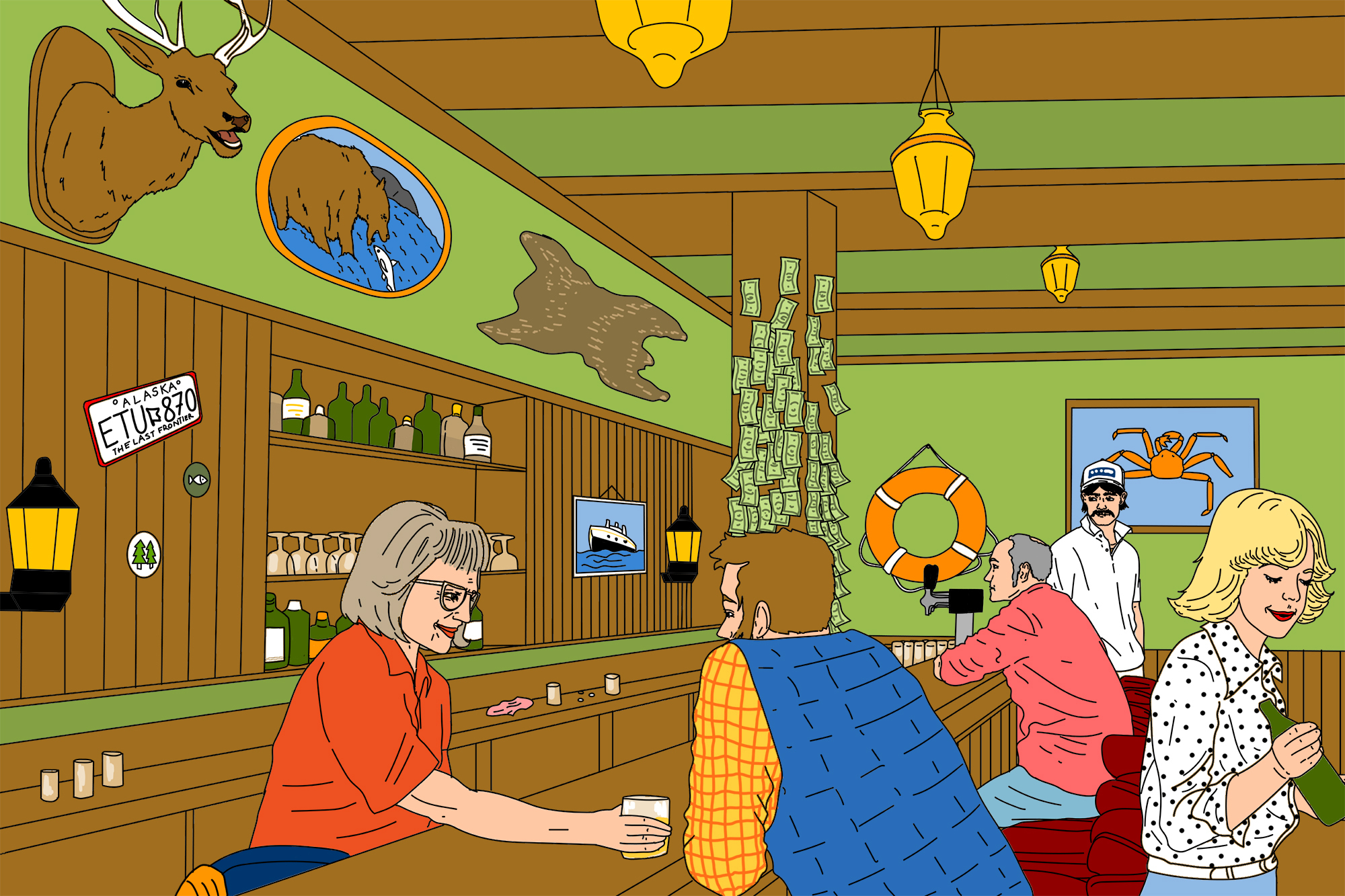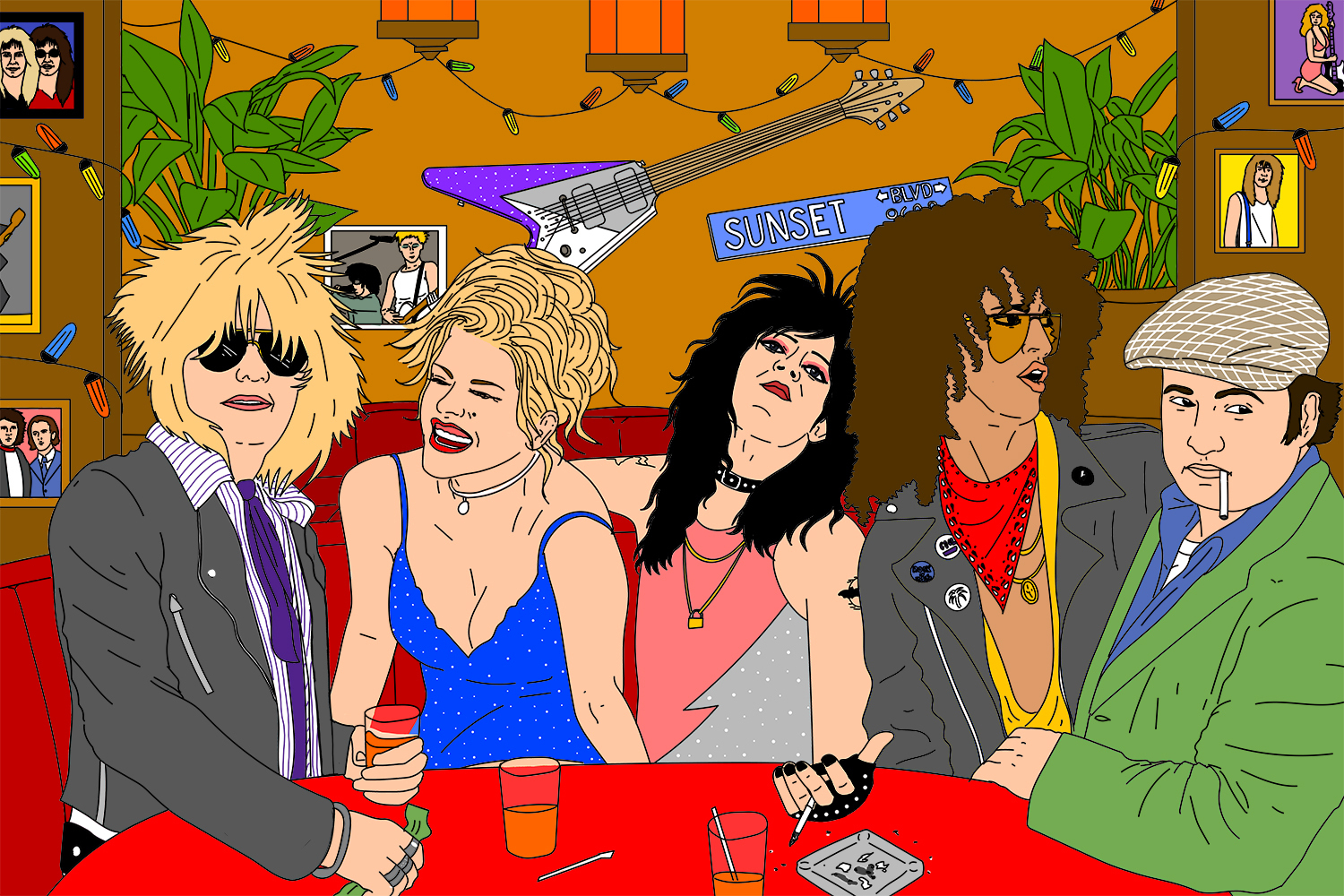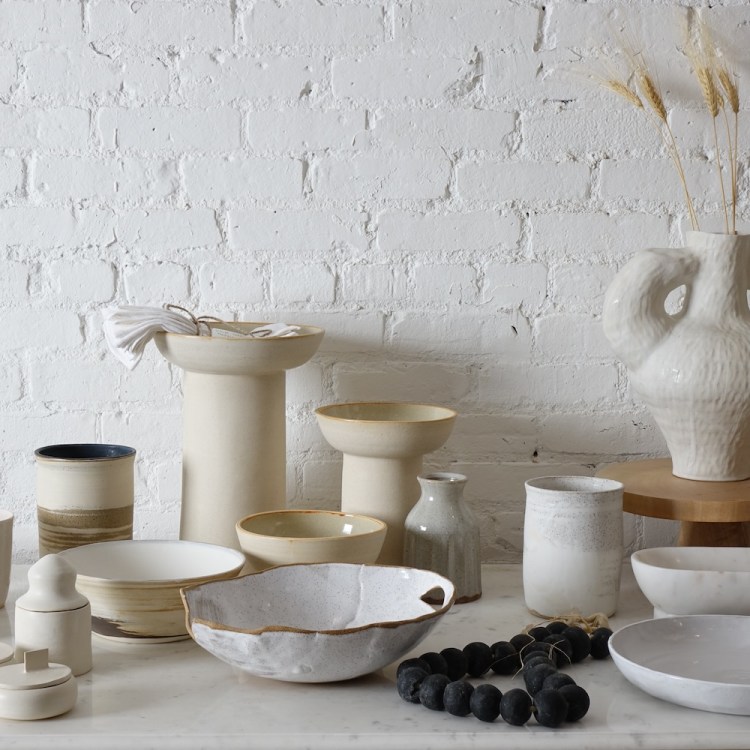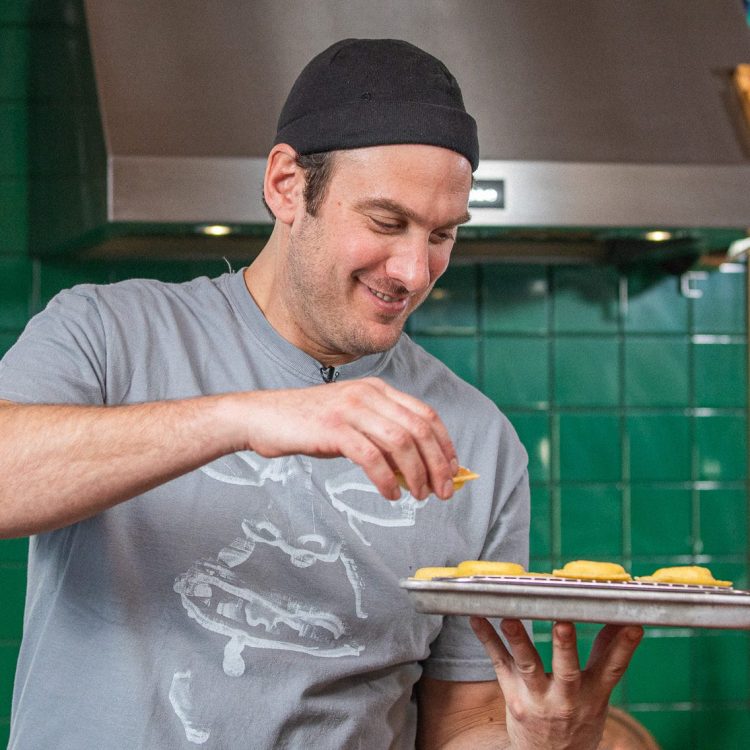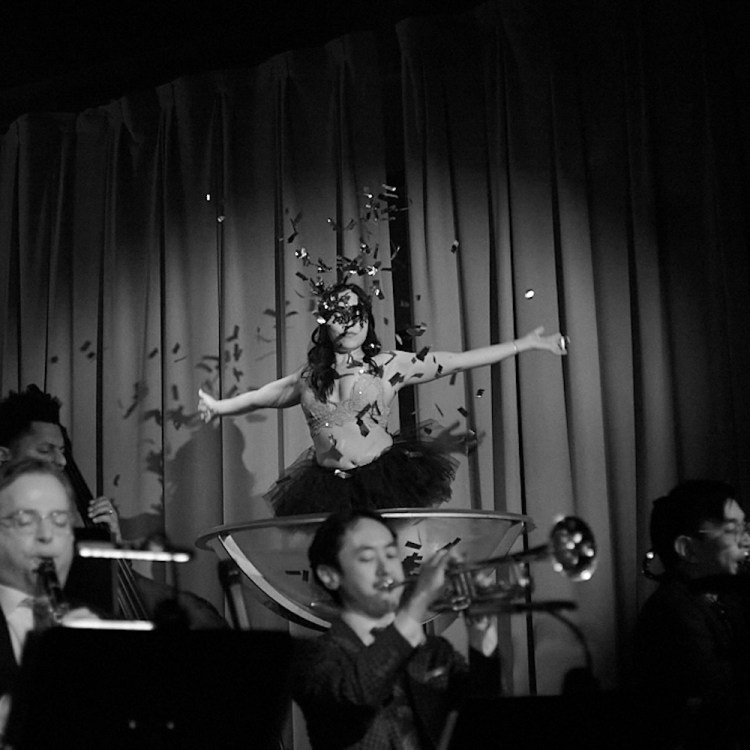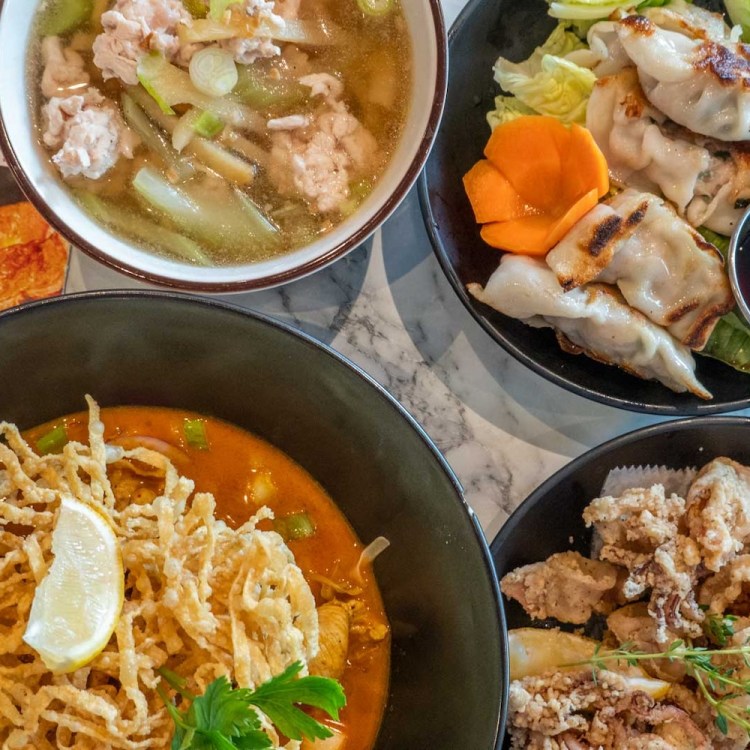“DJ. DJ. Can you play some more Minogue? And keep up with the tracks that everybody knows,” sings Har Mar Superstar in his 2002 song “EZ Pass.” It details a night of bar-hopping for the husky white R&B performer, as he’s on a mission to find the “hypest party,” starting on Orchard Street in Manhattan, before taking the subway across the East River to northern Brooklyn and a bar called Enid’s.
By then, Williamsburg and neighboring Greenpoint were starting to usurp the East Village and Lower East Side as the coolest neighborhood in the five boroughs, laying groundwork for what would become one of the greatest bar scenes in American history.
“Young men and women who were just recently out of college moved to Williamsburg because it was cheap and had relatively easy access to midtown New York City,” recalls Tony Wolf, an actor and artist who came to the area in 1996. Back then it was mostly a neighborhood composed of older Eastern Europeans, many Polish, although twenty-something artists and entrepreneurial types had begun to cram into the cheap (and often illegal) lofts lacking public utilities. They would need places to drink aside from the traditional Polish joints like Stones Tavern and old-man dives like the Turkey’s Nest.
Enter Enid’s.
“Once Enid’s opened, it signaled a sea change in the culture of the neighborhood,” claims Wolf, who even created a comic just to celebrate this watershed moment.
It would be located just outside McCarren Park, which was not the most lively place in New York City in 1999. Owned by two recent Kansas City transplants, Ky Anderson and Jaime Eldredge, Enid’s — “just a cool old lady name” claimed Eldredge — offered a shimmering, golden camel on the wall (swiped from a beloved gay bar back in Kansas City), a vintage photo booth, a tabletop Ms. Pac-Man machine and an Attack from Mars pinball machine. Above the bar and its chalkboard menu touting the cheap cans of Tecate on offer, a DJ booth was placed like an altar.
“DJs have dropped the title ‘DJ’ and prefer names such as ‘Loco’ and ‘InterPlanetaryBeatSex,’” wrote Robert Lanham in 2004’s The Hipster Handbook. “Attaching ‘DJ’ to your name is very nineties.”
Indeed, if ’90s kids weren’t used to seeing DJ booths at laid-back dive bars, remember these weren’t the untz untz untz DJs in the traditional club sense. These were likewise laid-back guys and gals like Dubliner Dominique Keegan and Eugene Hütz, a lanky Ukrainian with a handlebar mustache who spun a mix of flamenco and gypsy music.
“These young people saw a neighborhood they loved but which basically had no bars for people in their early or mid-20s, so they created one. And then another. And then another,” says Wolf. After Enid’s, he claimed, “the floodgates opened for the arrival of what would soon to be known as “hipsters.”
If the word “hipster” has become meaningless these days, you have to also remember, for most of the 20th century, what the word “Brooklyn” conjured up: images of street toughs and the hard-knock life, hot dogs and pizza joints, rappers and B-boys and beefy Italian guys saying “fuhgeddaboudit.” Suddenly, however, there were these hipsters: skinny, unkempt, liberal arts-educated kids in tight jeans inhabiting the north part of the borough. Even more amusing, these non-natives had begun cosplaying as a sort of working-class middle-American, wearing trucker hats, playing Big Buck Hunter at bars, drinking cans of PBR. It was ironic, until it wasn’t. They’d bring these same sensibilities and aesthetics to the bars that began to form around McCarren Park and beyond.
Like across the street from Enid’s, where, in a former auto parts store, Erik Green would open Bar Matchless in 2003. A “shocks & struts” sign might have clued you into the former tenant as you played foosball, ordered microbrews from the winding, custom-made copper bar or listened to heavy metal music. According to the New York Times, Matchless “gradually made live shows less of a priority” — as had Enid’s — instead focusing on their robust DJ scene.
“My theory was that the young creative people basically create their own playground when they develop an area, and thus, they kind of make it a fusion of all their favorite things and influences,” says Wolf. “So the bars of Greenpoint and Williamsburg were a hodgepodge of whatever that generation loved: ’80s video games, playfully kitschy decor that perhaps recalled their parents’ or grandparents’ basements, and a mixture of modern and classic design.”
This was an exciting time, when rent was still cheap enough that you didn’t need the backing of some venture capital-funded “restaurant group” in order to open a bar — and thus, many interesting ones would spring up.
Like Daddy’s, opened a few weeks after 9/11 next to an Italian butcher shop, Graham Ave. Meats & Deli, that was once busted for Mafia ties. It was owned by three up-and-coming musicians on the Brooklyn scene — Oakley Hall drummer Greg Anderson as well as sisters and bandmates Jen and Laura Rogers. Their Christmas light-illuminated dive offered a horseshoe-shaped bar and a fireplace, along with free hot dogs and cheap drinks like the de rigueur local beers of the era (Brooklyn Lager, Blue Point Toasted Lager) and their signature Margaveza cocktail (Dos Equis with a key lime-flavored frozen Margarita topper). They had an impressive jukebox and, of course, DJs playing everything from Willie Nelson to MGMT.
The internet, certainly bar-recommendation sites, was still in its infancy; social media barely existed — these were word-of-mouth sensations. Anyone could go, so long as you were willing to venture into these not-yet-gentrified neighborhoods.
“There was a period of time when I worked here [in Williamsburg] when my first thought while working was ‘don’t get killed,’ then it was ‘don’t get robbed,’ then it was just ‘serve drinks,’” says Maurice Johnson, one of the owners of Trash Bar, which opened in Williamsburg in 2004.
Hardly an ironic name, it was an extremely dingy punk club which featured a free tater tot machine, karaoke nights and out-of-state license plates dotting the walls above ripped-out car seats. Galapagos, located in a former mayonnaise factory, featured everything from DJs to live bands to dancers and performance artists.
There was the Manhattan Inn (yes, located in Greenpoint, on Manhattan Ave.), a wood-heavy bar with antique cinema seats. Though it had a sunken stage featuring a whitewashed baby grand piano, it became best known for its DJ’ed dance parties on the weekends. Pete’s Candy Store, in the shadow of the BQE, was a former malt shop that offered pub trivia and back-room karaoke. Black Betty, on Metropolitan Avenue, was somehow both a performance space and a Moroccan restaurant. In his book The Last Bohemia, Robert Anasi lauded its DJs, who played pretty much everything, and called it an “immediate all-out, register-ringing, booze-flowing, rump-wagging neighborhood hit.” It was eventually replaced by The Commodore, a nautical-themed dive with arcade games you’d never heard of (Championship Sprint, Crazy Climber), kitschy house cocktails like Hurricanes and a Piña Colada with an amaretto float, killer fried chicken and an old CD jukebox stocked with bands like Budgie and Detroit Emeralds.
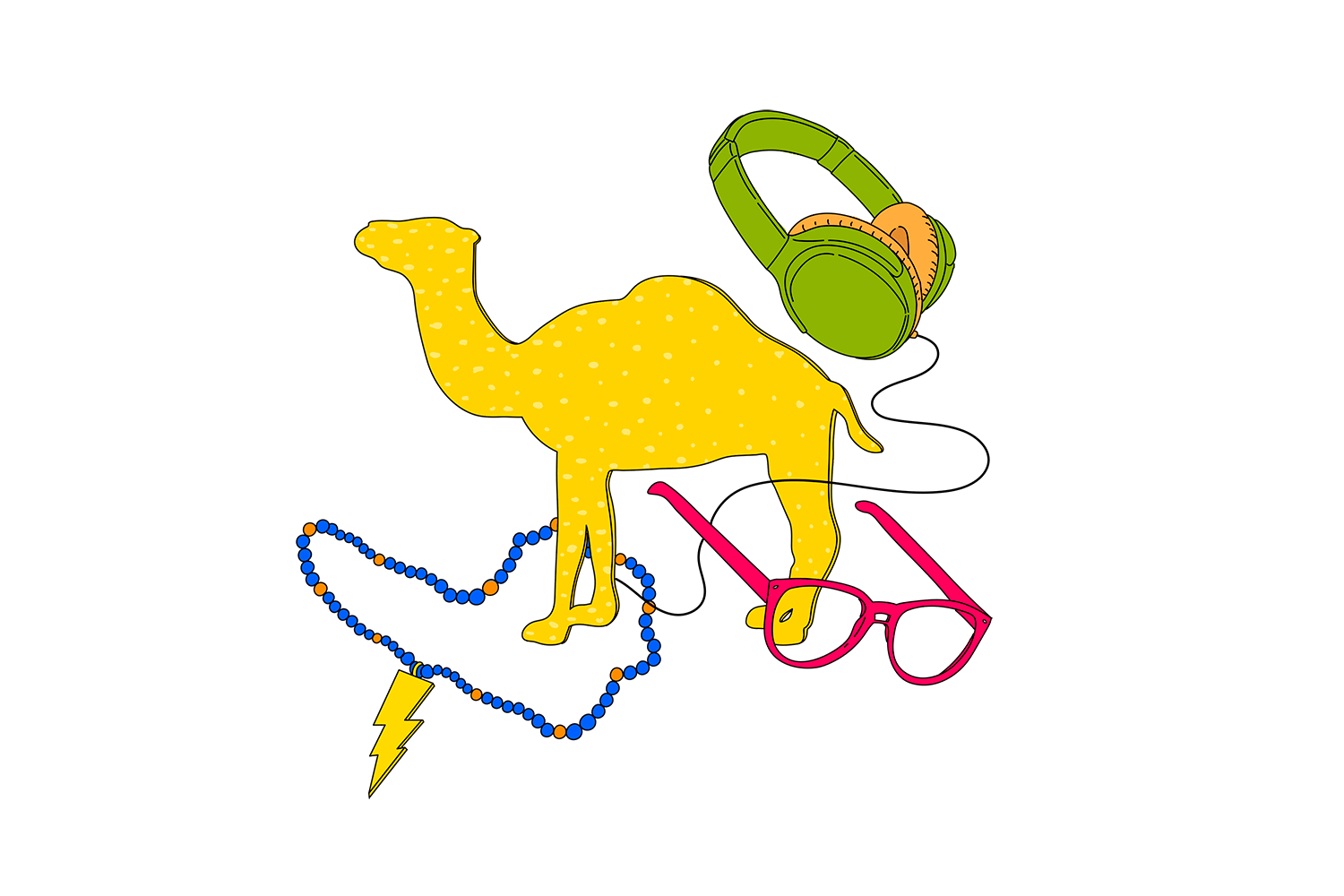
You could also find dance parties, like the ones at Royal Oak, which Gothamist was calling a “douche magnet” by 2009. There was even a short-lived place with blacked-out windows called Kokie’s, of which Megan Penmann wrote, “in a true twist of hipster irony, the name Kokie’s really said it all — for $20 you could actually buy small baggies of cocaine out of a closet tucked away at the back of the bar.”
Still, the hip joints a bit off the beaten path of “regular” New York reigned king, at least compared to what was going on in the now-glitzy Meatpacking District in Manhattan. In Williamsburg and Greenpoint you could wear your T-shirt and jeans, listen to music and dance, drink cheap beer and, yeah, do coke in the bathroom if you wanted. Unlike clubs in lower Manhattan, there was no velvet rope or VIP list, and there was certainly no bottle service, which was becoming de rigueur in the earliest days of the new millennium.
“Bottle service … would have been a bottle of Clorox,” joked music journalist Rob Sheffield about the Williamsburg scene. “Like, scrub your own corner of the floor to stand on.”
Williamsburg was cheap to live in, inaccessible for people who didn’t live there, and, in many ways, foreboding to outsiders like me, who lived in Hell’s Kitchen during this era; Williamsburg at large always seemed like a party I wasn’t cool enough to even know about. (Even in writing this piece, I felt anxiety in having to reach out to all these “cool” Williamsburg scenesters and former scenesters for their remembrances.) Unlike Har Mar, it was rare that I would ever cross the East River. Others, however, gradually got over that.
“You didn’t go to Brooklyn because it’s terrifying there,” recalled dance-pop artist Juan MacLean in Lizzy Goodman’s seminal 2017 book Meet Me in the Bathroom. “Then, around probably like 2002, James [Murphy, his sound engineer] and I went to Luxx in Williamsburg. That was really, like, my first awareness of Williamsburg.”
Even better, the DJ was spinning MacLean’s first record. On Saturday nights the club would turn into “Berliniamsburg” — Williamsburg by then getting a reputation as the new Berlin, a place for top electroclash DJs and promoters like Larry Tee. Eventually, legit stars like TV on the Radio, Peaches and Scissor Sisters would begin emerging from this music scene.
“What was happening in Williamsburg and Greenpoint definitely felt revolutionary at the time, and even more so as we look back,” recalls Wolf, who compares its cultural cachet to Haight-Ashbury of the 1960s. “I remember being at a party in Williamsburg around 2001, well before 9/11, and hearing that Williamsburg was talked about as a hot, trendy area even among young people in Japan. There was this sense that, even in Europe and around the world, Williamsburg was on everyone’s mind and lips. That kind of momentum and global reputation for a neighborhood seems rare, culturally speaking.”
As early as 2007, though, things were changing, and outsiders were invading the neighborhood. They were coming from Manhattan, of course, but also (gasp) New Jersey and Long Island suburbs. These gritty hipster bars had even started to serve Sunday brunch — yogurt topped with homemade granola, huevos rancheros and the like.
“Maybe once a week I get a group of people ordering dirty martinis and coffee with dessert, or decaf or Splenda,” waitress Lynnea Scalora complained to Grub Street in 2007. “All these things that aren’t what happens at Enid’s.”
The developers were coming too, and, by 2008, million-dollar apartments aplenty were springing up in Williamsburg — comparable apartments across the river in Manhattan were then priced some $300,000 lower. Not even the ensuing recession and housing crisis would affect the Williamsburg boom, as monied lawyers, finance guys, tech bros and trust-fund kids began streaming into the neighborhood, trying to steal some of its cultural cachet. By 2017, Williamsburg would have $6.5 million penthouses up for sale.
“It definitely seemed to get overblown and too expensive,” recalls Wolf, “and lose its homey, grassroots feel.”
Many of the original hipsters who had moved onto marriage and raising families had also moved onto less hip, family-friendly hoods like Park Slope and Carroll Gardens. As rents were being doubled and tripled, the new influx of young and broke bohemians had been forced to set up shop deeper into the borough, in neighborhoods like Bushwick and Bed-Stuy, which were becoming “the new Williamsburgs.” By now, the original Williamsburg had Michelin-starred restaurants, 50-story waterfront high-rises and cocktail joints where you could pay $24 for the privilege of having your martini prepared tableside.
“Times change, neighborhoods change, and this is our time to move onto other achievements,” Laura Rogers noted upon Daddy’s closure on New Year’s Eve 2016. That same year, Trash Bar would close and get turned into a yuppie boxing gym. Bar Matchless was still somehow ticking along, however, even landing a big feature in a July 2017 edition of the New York Times, discussing their then-DJ “DIY.” Though it noted that the bar was getting “‘infiltrated’ by the new-to-Williamsburg types,” and the entire scene by families with children — an ominous sign all around. By January of 2018, Matchless too would be closed, the building turned into six stories of condos.
The shuttering of Enid’s in March of 2019 meant the same bar that started the era could put a bookend on it. As DJs Kat Daddy Slim and Jdirrt played dirty South rap, a packed house danced until the 4 a.m. last call. Even in closing, Enid’s had known their role in the neighborhood’s renaissance, their part in elevating this former industrial wasteland into an international phenomenon. And, if many of Enid’s regulars of the early-aughts had moved onto families and adulthood, Enid’s still offered a parting gift to their current locals: pens with a fitting motto for those millennials who were late to the greatest party that ever was:
“Enid’s: Since before you moved here.”
Join America's Fastest Growing Spirits Newsletter THE SPILL. Unlock all the reviews, recipes and revelry — and get 15% off award-winning La Tierra de Acre Mezcal.
